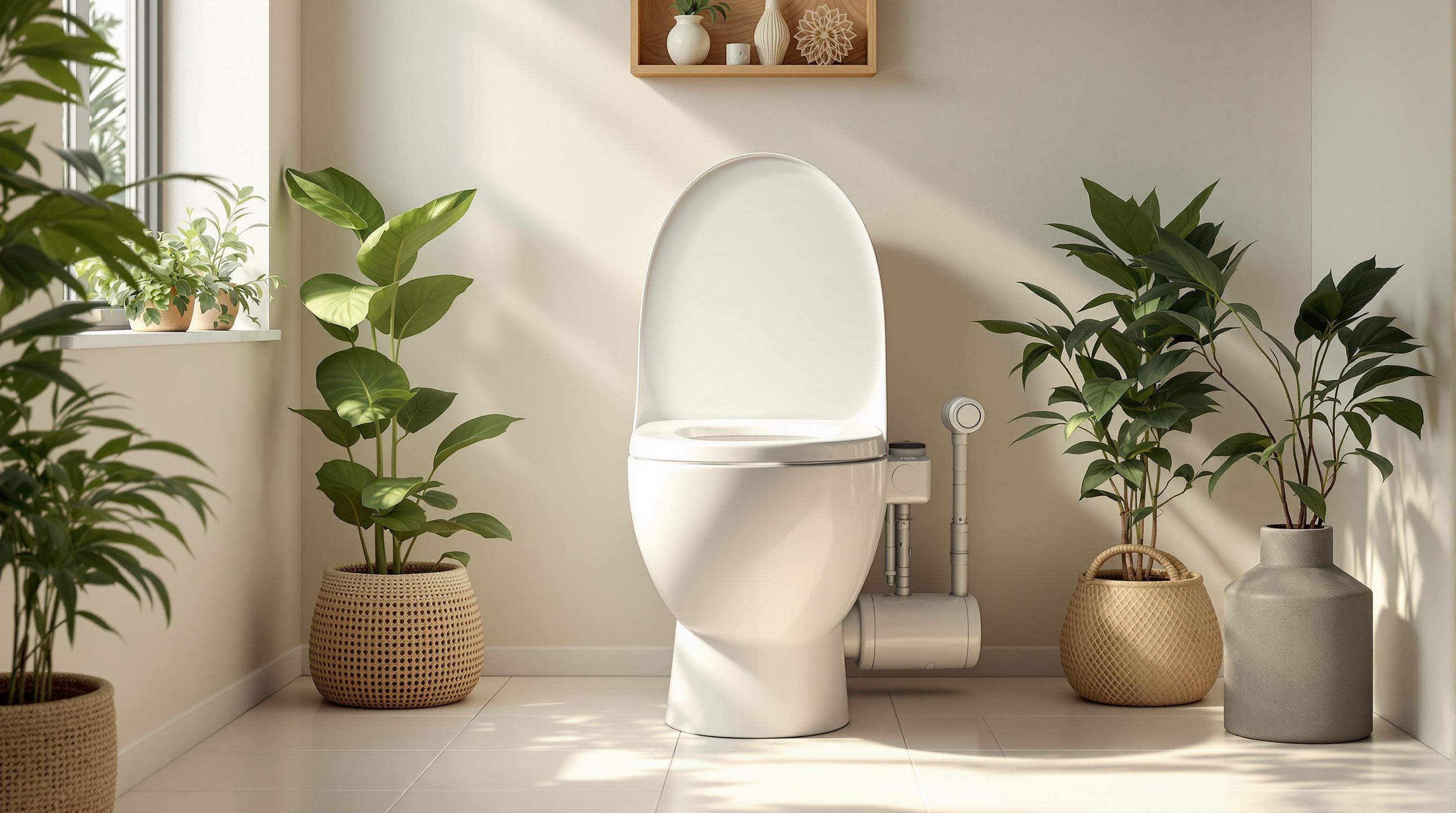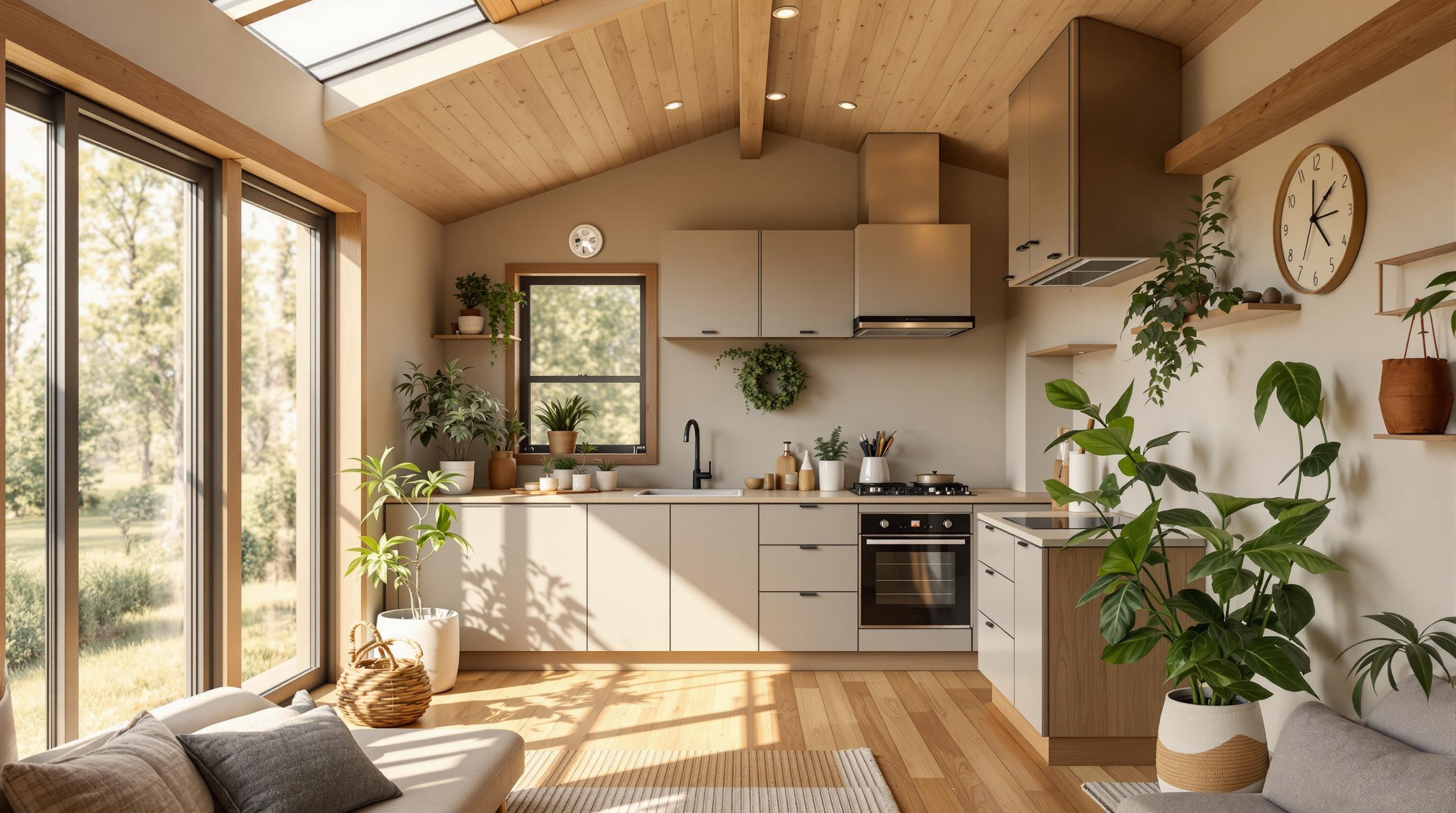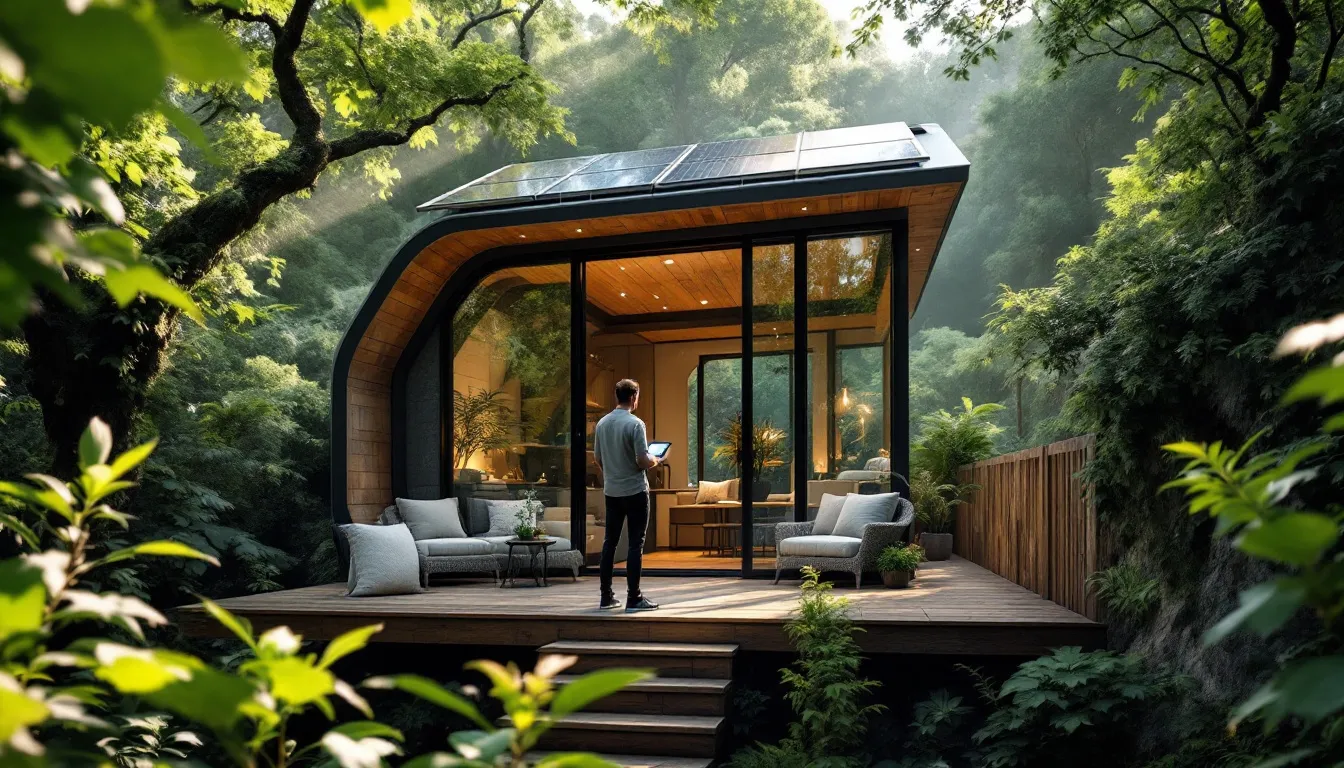Living in a tiny home but don't want to part with your cherished mementos? Here are 5 practical solutions:
- Digitize photos and documents
- Rotate displayed items seasonally
- Create compact memory boxes
- Repurpose old items as decor
- Use climate-controlled storage units
Quick Comparison:
| Method | Space Needed | Easy Access | Preservation |
|---|---|---|---|
| Digital | Low | High | Moderate |
| Rotation | Moderate | High | Moderate |
| Memory Boxes | Low | Moderate | High |
| Repurposing | Moderate | High | Moderate |
| Storage Unit | High | Low | High |
These strategies let you keep meaningful items without cluttering your tiny home. The key is being selective about what you keep and finding creative ways to incorporate sentimental objects into your living space.
Related video from YouTube
1. Turn Physical Items into Digital Files
Living in a tiny home? You don't have to ditch all your memories. Let's talk about turning your physical stuff into digital files. It's a great way to keep what matters without the clutter.
How to Scan Photos and Papers
Here's how to digitize your photos and documents:
- Pick your tool: For a small batch, your smartphone works fine. Try apps like Adobe Scan or Google PhotoScan. Got a big project? A flatbed scanner might be better. The Epson FastFoto FF 680W can handle 36 photos at once, but it'll set you back $530.
- Get the resolution right: Aim for at least 300 DPI for photos. Want to blow them up later? Go for 600 or even 1,200 DPI.
- Clean up: Wipe down your scanner and photos with a microfiber cloth. It'll make your digital copies look way better.
- Go for color: Even for black and white shots, scanning in color captures more detail.
- Consider the pros: Got a ton of photos or some really old ones? Services like FotoBridge or ScanMyPhotos can do the heavy lifting. They'll even send you packing materials.
Where to Store Your Digital Stuff
Now that you've gone digital, you need a safe spot for all those files. Here are some cloud storage options:
- Google Photos: You get 15GB free, plus a built-in editor. It's great for most folks, but it does squish images over 16MP.
- pCloud: Fast and simple. You get 10GB free, with cheap plans for more space. They even offer a lifetime deal: $350 for 2TB for 10 years.
- iDrive: Great value here. You can snag 5TB for just $3.98 for the first year. Perfect if you've got a mountain of digital memories.
- Flickr: Want to share your pics? Flickr lets you upload 1,000 photos for free. Need more? Their Pro account is $72.99 a year for unlimited storage.
When picking a cloud service, think about stuff like auto-uploads, sharing options, and how easy it is to organize your files. And don't forget security - you want your digital memories locked up tight.
2. Switch Out Items on Display
Living in a tiny home doesn't mean ditching all your favorite stuff. You can enjoy more of your sentimental items without cluttering up your space. How? By rotating what's on display.
Here's the deal:
Set up a smart storage system. Get some acid-free boxes for delicate things like photos and papers. Group your items by theme or time period. Slap on some removable labels so you can find stuff easily.
Now, where to put these boxes? Look for furniture with hidden storage. An ottoman or coffee table with a secret compartment works great in a tiny home.
When should you switch things up? Here are some ideas:
- Match the seasons. Beach stuff in summer, cozy items in winter.
- Celebrate personal milestones. Birthday coming up? Break out those childhood mementos.
- Do a monthly refresh. Set a reminder to swap out a few items each month.
- Create mini-stories. Put together small displays that tell a tale or bring back a specific memory.
April White from Whispering Pines Homestead says it best: "It's an easy way to add seasonal decor and rotate all the things I love."
sbb-itb-2ef3f3a
3. Make Small Memory Boxes
Living in a tiny home doesn't mean ditching all your sentimental stuff. Enter small memory boxes: a smart way to keep your precious keepsakes without turning your space into a cluttered mess.
How to Build Your Memory Box
You can whip up a memory box in about 30 minutes. Here's the lowdown:
1. Pick your container
Go for a small, sturdy box. Ikea's Kasett range is a good bet - they're tough and come in different colors.
2. Gather your stuff
You'll need:
- Scrapbook paper
- Printed photos
- Twine or raffia
- Small trinkets you want to keep
3. Set up the inside
Cut out photo frames from patterned paper. Make them about an inch smaller than your box's interior for a neat, layered look.
4. Arrange your memories
Stick photos to the paper frames with glue or double-sided tape. Lay them out in a way that makes you smile.
5. Make it easy to pull out
Measure and attach some twine or raffia to create a pull-out system for your photos. This way, you can easily peek at your memories without emptying the whole box.
6. Add your personal touch
Toss in small trinkets, ticket stubs, or other flat mementos that mean something to you.
7. Label it clearly
Slap on some washi tape with a label. It'll help you spot what's inside at a glance, especially if you end up making multiple boxes.
"A memory box can be a great place to keep letters, photos, and other meaningful items", says Caitlin Jaymes, a closet organizer and fashion stylist.
The trick? Be picky about what you keep. Focus on your most special treasures, not everything you've ever owned.
To make the most of your tiny space, try creating themed memory boxes:
- Family vacations: Ticket stubs, small souvenirs, and photos from your trips
- Childhood memories: A few special drawings, report cards, and small toys
- Wedding memorabilia: Your invitation, a dried flower from your bouquet, and candid photos
By grouping your memories like this, you'll find it easier to organize and enjoy them without drowning in stuff.
One tiny home dweller put it this way: "I was blown away by how much joy a small memory box could bring. It's like a mini happiness vault that doesn't hog space. Every time I open it, I'm zapped back to those special moments."
4. Give Old Items New Uses
Living in a tiny home doesn't mean ditching all your sentimental stuff. Instead, why not give them a new job? By repurposing your keepsakes, you keep the memories alive while adding some flair to your space.
Mix Items Into Your Home Design
The trick? Make your sentimental objects pull their weight. Laura Beth Love, author of Boho Chic Jewelry and blogger at Dishfunctional Designs, nails it:
"The idea is to get these things out of storage and find creative ways to show them off."
Here's how to work your cherished items into your tiny home:
Turn old silverware into cabinet pulls. Flatten a spoon or fork head, bend the handle into a loop, and boom - you've got a unique kitchen upgrade.
Got vintage hankies or old t-shirts? Stitch them into a rag quilt. It's a cozy blanket that folds up small when not in use.
Frame baby shoes or wedding lace for wall art. Or sew vintage doilies onto mesh in an old picture frame. It's family history on display without the clutter.
Make no-sew pillows from vintage linens. Just fold the edges, secure with fusible tape, and stuff. Easy comfort with a side of nostalgia.
Cut off the end of a spoon or fork, drill a hole in the handle, and you've got a funky pendant necklace. It's jewelry that keeps family heirlooms close.
The goal? Use these items in ways that meet your needs and tug at your heartstrings. As one tiny home dweller put it:
"I was blown away by how much joy a small memory box could bring. It's like a mini happiness vault that doesn't hog space. Every time I open it, I'm zapped back to those special moments."
5. Store Items Outside Your Home
Living in a tiny home doesn't mean ditching all your stuff. Here's how to keep your cherished items safe without cramping your style:
Temperature-Controlled Storage Units
These units are a lifesaver for preserving valuable and sentimental items. They keep a steady temperature between 55 and 80 degrees Fahrenheit all year round. No more worrying about your stuff getting ruined by extreme heat, cold, or humidity.
Why go for climate-controlled storage?
- Keeps your electronics, artwork, and important docs safe
- Stops damage from moisture, heat, and cold
- Perfect for places with harsh winters or sticky summers
What to look for:
1. Real temperature control: Not just air conditioning
2. Easy access: Convenient hours and drive-up options
3. Tight security: Cameras and secure entry systems
4. Squeaky clean: Check for cleanliness and pest control
Now, let's talk money. Prices vary a lot depending on where you are and how much space you need. Here's a quick look at monthly costs for a 10x10 unit in different cities:
| City | Price Range |
|---|---|
| New York City | $144 - $660 |
| Los Angeles | $90 - $710 |
| Chicago | $149 - $281 |
| Houston | $99 - $247 |
| Phoenix | $79 - $320 |
In Gulfport, a 10x20 climate-controlled unit will set you back about $141 a month.
"Climate-controlled storage can be a huge relief by saving you from throwing away items you will later miss", says Storage Etc.
Quick tips for storing your stuff:
- Clean and dry everything before packing
- Use acid-free materials for wrapping
- Label boxes clearly
- Use pallets to keep items off the floor
Just remember: storage units are great, but they're not a substitute for decluttering. Be picky about what you store to keep costs down and make sure you're only keeping the stuff that really matters.
Conclusion
Living in a tiny home doesn't mean tossing out your memories. Here are five ways to handle sentimental items in a small space:
- Turn physical items into digital files
- Switch out displayed items
- Create small memory boxes
- Give old items new uses
- Store items outside your home
Each method balances space, access, and preservation differently:
| Method | Space Needs | Ease of Access | Preservation Quality |
|---|---|---|---|
| Digital Files | Low | High | Moderate |
| Display Rotation | Moderate | High | Moderate |
| Memory Boxes | Low | Moderate | High |
| Repurposing | Moderate | High | Moderate |
| External Storage | High | Low | High |
Digitizing saves space, but back up those files! Rotating displays keeps things fresh. Memory boxes protect delicate items. Repurposing breathes new life into old stuff. And for things you can't part with but don't need daily? External storage works.
Sarah Giller Nelson from Less is More Organizing Services has a smart take:
"When deciding what to keep, ask yourself, 'How do I want to remember this person or event? Does this object embody that in the best way possible?'"
Pick the method that works for you. The goal? Keep your memories alive without cluttering your tiny home.



